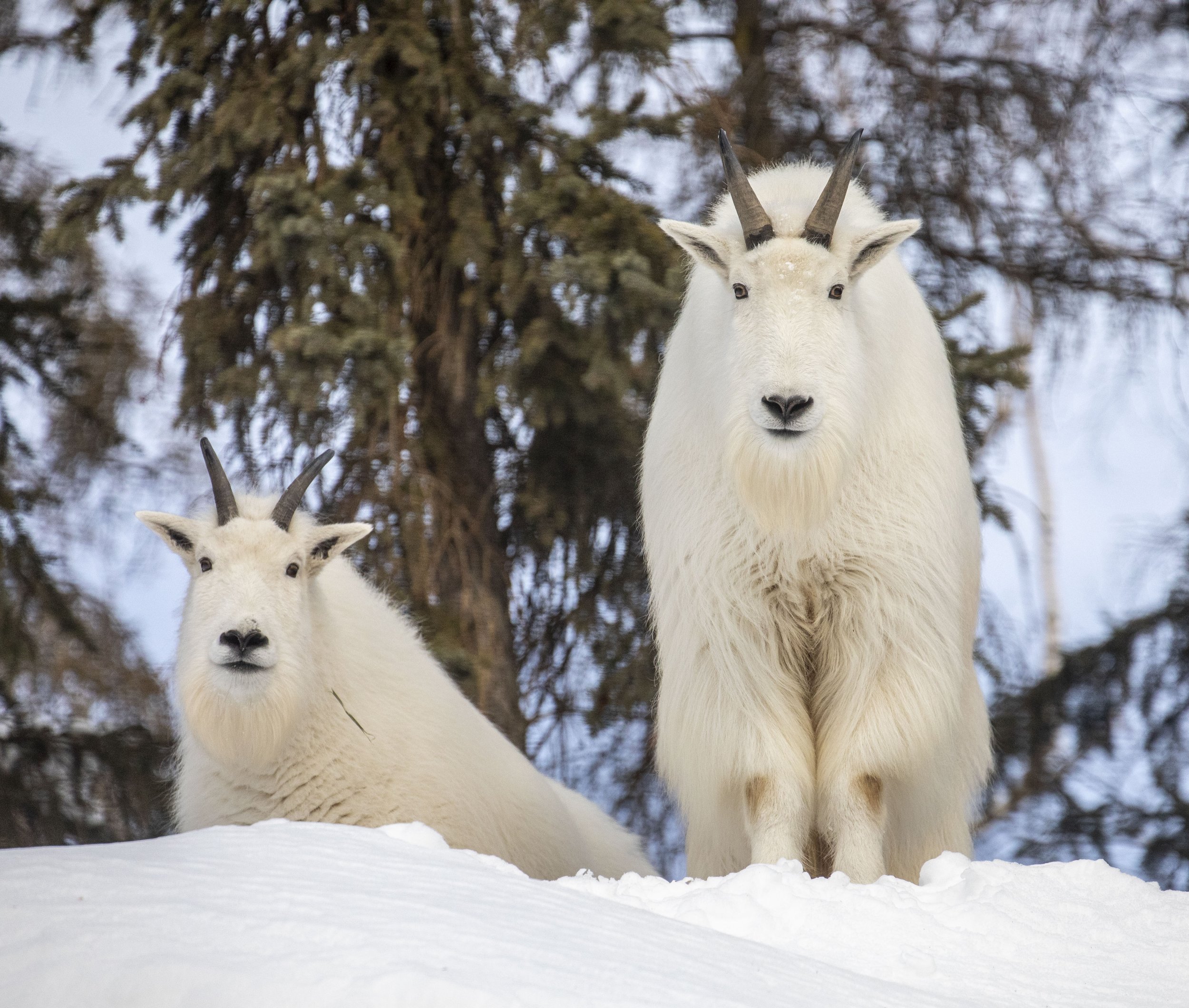Mountain Goat
Meet one of Alaska's best cliff-side climbers, the mountain goat. Back to animal directory.
mountain goat
Oreamnos americanus
LIFE SPAN: 12-20 years under human managed care.
RANGE: Mountain goats are found in the steep and broken mountain ranges of northwestern North America, from the northern Cascade and Rocky mountains to Southcentral Alaska.
SIZE: Males (billies) weigh 260-350 lbs, females (nannies) weigh up to 180 lbs.
PHYSICAL FEATURES: The mountain goat is the single North American representative of a unique group of mountain ungulates called the Rupicaprinae, or “rock goats.” They are characterized by having relatively short horns (both sexes have horns; females smaller than males) and a fondness for living in rugged terrain with sheer cliff walls. Mountain goats are one of two species of all-white, hoofed, large mammals found in Alaska and are easily identified from Dall sheep by their black horns and where they are found in the state. These goats are adapted for extreme winter conditions and have a long, shaggy winter coat.
FOOD: Mountain goats are both grazing and browsing animals, depending on the particular habitat and season of the year. They normally summer in high alpine meadows where they graze on grasses, herbs and low-growing shrubs. As winter advances, feeding habits generally shift to browsing. Blueberry, hemlock and lichen can be important winter diet items, but feeding habits in winter center on availability.
BEHAVIOR: Goats in coastal areas have altitudinal migrations from alpine summer ranges to winter ranges at or below tree line, typically in old-growth forests. In interior areas, mountain goats winter on windswept ridges as long as they remain uncovered by snow. Breeding season for mountain goats occurs between late October and early December. Mountain goats have a polygynous mating system, meaning that males will breed with multiple females but not vice versa. A single kid is born in mid-late May after a gestation of 180 days. Kids stay with their mothers until the next breeding season and often for some years beyond. Predators include bear, wolves and lynx.
CONSERVATION: Mountain goats occupy remote habitat and are therefore the least studied large mammal in North America. Mountain goat populations are stable in most of their range.

